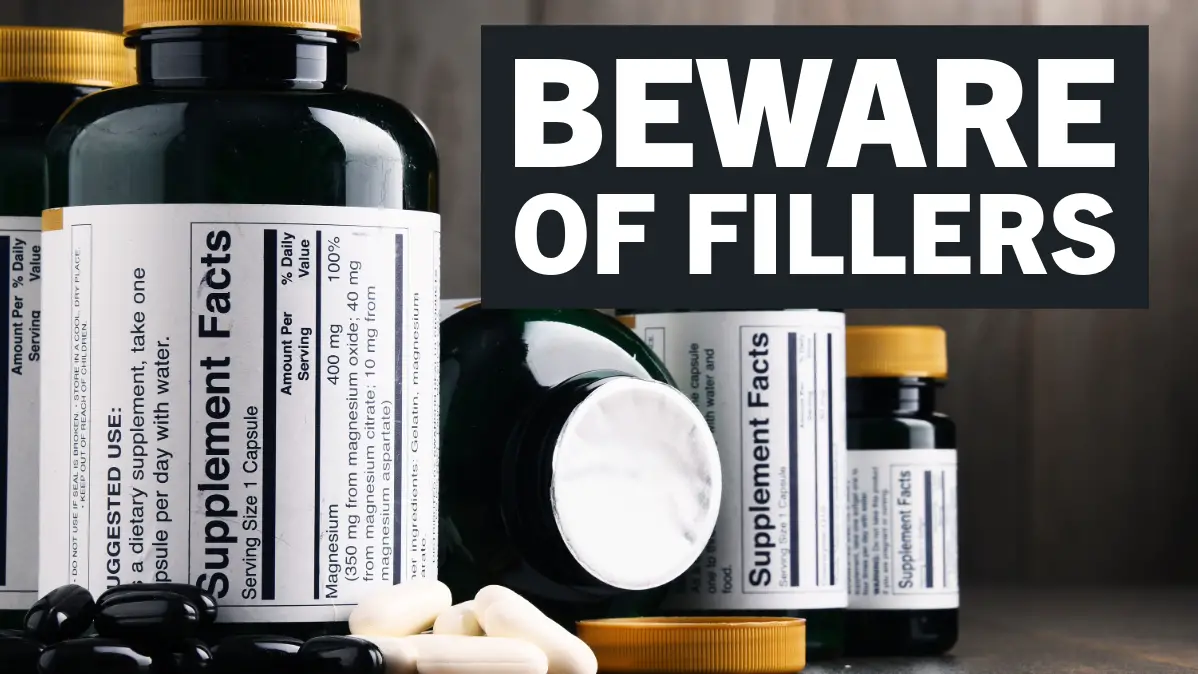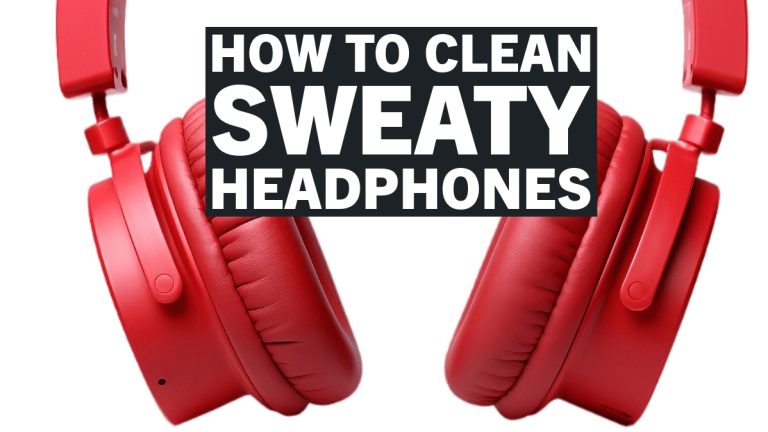How to Clean Gym Equipment: Expert Tips for a Hygienic Workout

ListedFit is reader-supported. When you buy through links on our site, we may earn a small commission.
Keeping gym equipment clean and well-maintained is essential for both hygiene purposes and ensuring the longevity of your fitness gear.
Whether you have a home gym or are responsible for cleaning a shared facility, knowing how to properly sanitize and maintain your equipment can lead to a safer and more enjoyable workout experience.
In this article, you will learn methods for effectively wiping down various types of gym equipment, as well as the importance of establishing a regular cleaning routine.
Quick Summary
Germs and bacteria can thrive on workout equipment due to the presence of sweat and contact with various users.
It is crucial to know which types of cleaning materials and products to use when caring for your equipment, as certain surfaces require specific techniques and solutions.
Additionally, understanding the difference between deep cleaning and everyday wiping down can ensure that your gym remains a clean, welcoming space for yourself and others.
Recognising the different types of gym equipment and their unique cleaning needs is essential for effective maintenance, whether it is rubber dumbbells, interlocking gym mats, or cardio machines. With the proper care and a commitment to cleanliness, you can provide a safe and healthy environment for users while prolonging the lifespan of your valuable fitness gear.
Key Takeaways
- Ensure gym equipment is regularly cleaned and sanitized for a safe workout environment.
- Use appropriate materials and products for different types of gym equipment.
- Balance everyday wiping down with occasional deep cleaning to maintain cleanliness and longevity.
In This Article…
Should You Wipe Down Gym Equipment?
Undoubtedly, wiping down gym equipment after use is a crucial practice for maintaining good health and hygiene. Gyms are communal places where bacteria, germs, and viruses can quickly spread. By wiping down equipment after every use, you significantly minimise the risk of infections and transfer of diseases like the common cold, influenza, SARS-CoV-2, and athlete’s foot.
During the COVID-19 pandemic, it has become even more important to ensure that gym equipment remains clean and germ-free. Viruses like SARS-CoV-2 can linger on surfaces, and by touching these surfaces, you may inadvertently contract the virus. Practising proper sanitisation measures, like wiping down equipment, can potentially reduce this risk.
Wiping down gym equipment is a vital aspect of maintaining both your health and the health of others using the facility. It helps limit the spread of bacteria, germs, and viruses while ensuring a cleaner and safer environment for everyone.
Gym equipment may also harbour other infectious bacteria, such as MRSA. This particular bacterium is responsible for causing various skin infections and can be difficult to treat in some cases. Wiping down gym equipment not only minimises the risk of MRSA but also helps prevent the spread of other bacterial infections.
Additionally, fungal infections, such as athlete’s foot, can spread in communal environments like gyms. Wiping down equipment, specifically in areas where people may be barefoot, is essential in reducing the likelihood of transmission.
Recognising the Different Types of Gym Equipment to Clean

Gym equipment comes in a variety of forms and materials. To keep your workout space hygienic, it’s essential to recognise the different types of equipment and how to clean them effectively.
Typically Overlooked Gym Equipment
Some commonly overlooked gym equipment includes:
- Mats: Yoga mats and other floor-based exercise mats should be cleaned regularly, as they come into direct contact with your skin. To clean a mat, use a mixture of warm water and mild soap or an approved mat cleaner. Ensure the mat is air-dried before rolling it up for storage.
- Resistance bands: These lightweight and portable fitness tools also need thorough cleaning. To clean resistance bands, use warm soapy water and a cloth to gently scrub the surface. Rinse and let them air dry.
- Foam rollers: Foam rollers are often used for stretching but can harbour bacteria if not cleaned regularly. You can clean a foam roller using mild soap and warm water or disinfectant wipes.
Focus on High-Touch Surfaces
High-touch surfaces on gym equipment require regular cleaning and disinfection:
- Cardio equipment: Treadmills, bikes, and ellipticals are all high-touch surfaces. It’s essential to wipe down handles, screens, and other contact points with disinfectant wipes or a cloth and an appropriate gym equipment cleaner.
- Weights and benches: Free weights, hand weights, and dumbbells need regular attention. You can clean dumbbells and weight plates by wiping them with disinfectant wipes or a cloth soaked in a disinfectant solution. Benches should also be wiped down regularly with a disinfectant wipe or cloth.
- Machines: Gym machines, such as cable machines and leg press machines, have many touchpoints. You should clean them by wiping down surfaces, handles, and padding with a disinfectant solution or wipe.
- Electronics: Many gym equipment items today have built-in electronics for tracking workout progress and monitoring heart rate. Be cautious while cleaning screens and buttons to avoid causing any damage.
By taking care of your gym equipment and recognising the different types of equipment to clean, you will contribute to a hygienic workout environment, preventing the spread of bacteria and maintaining the longevity of your gear.
The Necessity of Regular Cleaning
Regular cleaning of gym equipment is essential for maintaining a hygienic and safe workout environment. Not only does it help prevent the spread of germs and bacteria, but it also ensures the longevity of your gym equipment. When gym equipment is not cleaned regularly, dirt, grime, dust, and sweat can accumulate, making it unsightly and unsanitary for users.
During workouts, perspiration and other bodily fluids often come in contact with the equipment. These fluids create a breeding ground for bacteria and viruses, increasing the risk of infections and illnesses. By keeping your gym equipment clean, you’re actively contributing to a healthy and enjoyable exercise experience for everyone.
Furthermore, gym equipment that is regularly cleaned and maintained is less prone to wear and tear, ultimately saving you costly repairs and replacements in the long run. Moreover, well-kept equipment helps ensure smooth functioning and better performance, providing your users with a superior workout experience.
To maintain a clean and safe environment for everyone, be sure to:
- Wipe down equipment after each use with disinfectant wipes or a solution
- Schedule regular deep-cleaning sessions for your gym and all its equipment
- Encourage gym members to follow proper hygiene practices and use available cleaning supplies
A clean gym reflects well on your establishment and motivates users to take better care of the equipment. By incorporating regular cleaning into your gym maintenance routine, you’ll promote a positive and healthy workout environment for all.
Deep Cleaning Versus Everyday Wiping Down
When it comes to cleaning gym equipment, there are two main approaches: deep cleaning and everyday wiping down. Knowing the difference between these two methods and when to use them is essential to ensure effective sanitisation and maintenance of your fitness equipment.
Deep cleaning is a more thorough process that should be carried out regularly to get rid of the accumulated dirt, sweat, and grime on your gym equipment. This process typically involves using specialised disinfectants and cleaners designed to eliminate various types of germs and bacteria. For deep cleaning, you can opt for stronger disinfectants and even consider using a mild soap and water solution to remove stubborn dirt. Doing deep cleaning is especially crucial in commercial gyms, where multiple people use the equipment daily.
Everyday wiping down, on the other hand, is a simpler and quicker method suitable for daily maintenance to keep your gym equipment clean and free from germs. For this process, you can use antibacterial wipes or spray cleaners with a microfiber cloth to clean handheld weights, exercise machines, yoga mats, and other gym accessories. By regularly wiping down your equipment, you can help prevent the build-up of germs and unwanted odours.

To ensure comprehensive cleaning of all equipment, you should combine both deep cleaning and everyday wiping down. The frequency of deep cleaning depends on the usage and type of equipment, but generally, it’s recommended to do it at least once a month for home gyms and more frequently for commercial gyms. Meanwhile, everyday wiping down should be done after every use to maintain a clean and hygienic environment.
Both deep cleaning and everyday wiping down are crucial to maintain the cleanliness of your gym equipment and promote a safe and healthy training atmosphere.
Materials and Products for Cleaning Gym Equipment
What do gyms use to clean equipment?
Gyms typically use disinfectant wipes or spray to clean their equipment, as these products are designed to eliminate germs and bacteria. Some common cleaning products used in gyms are Lysol, Clorox, and alcohol-based wipes. Additionally, they may use microfiber cloths as well as vacuum cleaners and mops for cleaning surfaces and floors.
In order to choose the right cleaning product for your gym, you should opt for EPA-registered disinfectants, which have been proven effective against a broad range of pathogens. Some gyms use cleaning solutions that contain quaternary ammonia or hydrogen peroxide as the active ingredients.
Can you use Clorox wipes on gym equipment?
Yes, you can use Clorox wipes on gym equipment, as these wipes are designed to remove germs, bacteria, and viruses, ensuring that the equipment is clean and safe for use.
Many professional gyms and fitness centres use Clorox or other disinfectant wipes to clean equipment surfaces.
When using Clorox wipes, it’s important to allow the equipment to air-dry after wiping, as this will help to ensure that the disinfectant is effective.
Can you use baby wipes on gym equipment?
Although baby wipes can be helpful for removing surface dirt and sweat, they may not provide sufficient disinfection for gym equipment. Baby wipes often lack antibacterial properties, making them a less-than-ideal option for effectively sanitising exercise machines and weights.
Instead, you should use cleaning products specifically formulated for disinfecting surfaces, such as the aforementioned disinfectant wipes or spray.
To maintain a clean and safe environment, it’s essential to use the proper materials and products suited to gym equipment.
This includes using high-quality disinfectant wipes or spray with active ingredients such as quaternary ammonia or hydrogen peroxide.
Additionally, be sure to utilise microfiber cloths to avoid scratching surfaces and damaging your equipment.
How to Clean Rubber Dumbbells
Cleaning rubber dumbbells is essential to maintain their appearance and prolong their lifespan. Taking the time to properly maintain your gym equipment will not only make your equipment last longer but also create a more hygienic and safe workout environment. In this section, we will discuss a simple and effective cleaning method for rubber dumbbells.
First of all, gather your cleaning supplies. You will need a bucket, water, a mild dish soap, and a clean cloth or sponge. It’s vital to use a gentle cleaning agent to refrain from causing damage to the rubber material.
Begin by filling the bucket with a gallon of water. Mix a few drops of the mild dish soap into the water until it creates a soapy solution. Now, immerse the clean cloth or sponge into the mixture and wring it out until it’s damp, not soaking wet.
Next, use the damp cloth or sponge to gently wipe down the rubber surfaces of the dumbbells. Be sure to clean any grooves or textured areas where dirt and grime might accumulate. Pay attention to the handles as well, as sweat and oil from your hands can build up over time.
After wiping down the dumbbells with the soapy solution, it’s crucial to rinse them with water to remove any soap residue. You can either dampen a clean cloth with water and use it to rinse the surfaces, or you can gently run water over the dumbbells, avoiding contact with metal parts to prevent rusting.
Once the dumbbells are thoroughly rinsed, use another dry, clean cloth to pat them dry. Ensure that all areas, including the metal parts, are completely dry to avoid any potential rust or damage. Finally, store your dumbbells in a cool, dry place away from direct sunlight.
How to Clean Interlocking Gym Mats

Interlocking gym mats are an essential part of any home or commercial gym, providing a comfortable and supportive surface for your workouts. However, they can quickly accumulate dirt, sweat and bacteria if not cleaned regularly. To keep your gym clean and safe, it’s important to deep clean your interlocking gym mats regularly. Here’s a simple and effective method for doing so that will leave your mats looking and smelling fresh.
Firstly, gather the necessary cleaning tools, including a soft-bristle brush, a mop or microfibre cloth, a bucket, and a mild cleaning solution. You can create a homemade cleaning solution by mixing lukewarm water with a quarter cup of white vinegar. Alternatively, you can use a gentle floor cleaner or dish soap, avoiding products containing bleach, oils or moisturizers.
Begin by clearing any items or equipment off the mats and sweeping or vacuuming up any loose debris. This will ensure that you have a clean surface to work with before applying your chosen cleaning solution.
Next, mix your cleaning solution in a bucket of lukewarm water, ensuring it is well-blended. Dip your mop or cloth into the water, wring it out until it’s damp but not dripping, and gently scrub your interlocking gym mats. The soft-bristle brush can be used to tackle any stubborn stains or grime in the crevices between the mats.
Make sure to go over each mat thoroughly, paying close attention to areas of high traffic or where you typically perform exercises. If your gym has particularly large interlocking gym mats, consider tackling one section at a time to cover the surface evenly.
After you’ve cleaned the mats, give them time to air dry before replacing any equipment. This will help prevent moisture from getting trapped beneath the mats, which can lead to the growth of mould or mildew.

By regularly maintaining your interlocking gym mats with this cleaning method, you can prolong their lifespan and ensure a healthier, more enjoyable workout environment.
How to Clean Gym Mats
Cleaning gym mats is essential to maintain a hygienic workout environment. Here are a few easy steps to help you clean your gym and yoga mats effectively.

Firstly, prepare a cleaning solution by mixing a few drops of mild detergent or soap with warm water. It’s important to avoid using harsh chemicals, as they can damage the mat’s material. Fill a spray bottle with the solution to make it easy to apply.
Begin by sweeping or vacuuming any visible dirt and debris off the mat. Next, spray the cleaning solution onto the gym mat, covering the entire surface. Give special attention to areas that come in regular contact with your hands, feet, or face, as these can harbour more bacteria.
After spraying the solution, use a microfiber cloth or soft sponge to gently scrub the mat. Be sure not to scrub too hard, as this can damage the mat’s surface and compromise its grip. Apply light pressure and work in circular motions. It’s crucial to clean both sides of the mat, even if you primarily use only one side.
Once you’ve finished cleaning, rinse the gym mat thoroughly with warm water to remove any soapy residue. Try using a handheld showerhead or garden hose for the most effective rinsing.
To dry the mat, lay it out flat or hang it in a well-ventilated area, away from direct sunlight. Allow the mat to air dry completely before rolling it up and storing it away. This will prevent the growth of bacteria and ensure the mat stays fresh and clean for your next workout.
By following these steps, you can maintain a clean and hygienic workout space while protecting the longevity of your gym and yoga mats.
General Tips for Gym Equipment Maintenance
Maintaining your gym equipment is essential for ensuring a clean and pleasant exercise environment and prolonging the lifespan of the equipment. Here are some general tips to follow in order to keep your equipment in top condition:
Firstly, ensure proper ventilation in your gym. This will decrease humidity and help eliminate unpleasant odours, making your workout sessions more enjoyable. It will also aid in reducing the build-up of dirt, dust and grime on your equipment.
Next, clean your gym equipment regularly. To do this, start by using a duster or a soft cloth to remove any visible dust and dirt. Then, you may use disinfectant wipes or spray to wipe down the equipment, ensuring you cover all surfaces to eliminate bacteria and germs. Remember to use an EPA-registered disinfectant for optimal results.
When tackling grime on your equipment, particularly in areas like grips and upholstery, some mild soapy water can be an effective solution. This will help remove sticky residue and dirt without damaging the surface. Ensure you thoroughly rinse off any soapy residue and dry the equipment properly after cleaning.
For preventing and removing odours, you could use a mixture of water and white vinegar to clean surfaces and upholstery. Spray the solution on your equipment and wipe it away, but always test a small, inconspicuous area in case of any adverse reactions or discolouration.
In your home gym, separating your equipment is also crucial for easier maintenance. Sort your gym equipment based on use, exercise and material type, as different equipment may require specific cleaning routines and solutions. This will help you establish a more efficient cleaning and maintenance plan.
Lastly, keep in mind that dirt, dust and grime can degrade your equipment over time and affect its performance. By following these general tips, you can ensure the longevity of your gym equipment and enhance your overall workout experience, leading to greater satisfaction and success in achieving your fitness goals.
Frequently Asked Questions
What is the most effective method for sanitising exercise machines?
The most effective method for sanitising exercise machines is by using a combination of cleaning and disinfecting.
First, use a mild soap and water to clean the surfaces, removing any dirt or grime. Then, apply a disinfectant, such as Clorox or Lysol, to kill any remaining bacteria and pathogens.
It is essential to follow the manufacturer’s instructions and ensure the disinfectant remains wet on the surface for the required amount of time.
Which disinfectant wipes are best suited for workout equipment?
Disinfectant wipes designed for use on gym equipment should be both effective and safe for the materials.
Look for EPA-registered disinfectant wipes, which are proven to kill unwanted bacteria and pathogens.
Always check to make sure the wipes are compatible with your equipment materials, as some may cause damage or discolouration.
How can I prepare a homemade cleaning solution for gym gear?
A simple homemade cleaning solution for gym gear can be made with everyday household items.
Mix equal parts of water and white vinegar in a spray bottle, along with a few drops of dish detergent. This solution is effective for cleaning most surfaces and can be used on gym equipment.
However, it may not offer the same level of disinfection as commercial cleaners, so be sure to use a separate disinfectant as needed.
What cleaning products are safe for use on fitness equipment?
When choosing cleaning products for fitness equipment, it’s important to consider the materials used in the equipment as well as the efficacy of the cleaner.
Commonly used and safe cleaning products include mild soap and water, vinegar-based solutions, and EPA-registered disinfectants designed for gym equipment.
Be sure to follow the manufacturer’s guidelines for your specific equipment to avoid damage or voiding warranties.
Are commercial gym cleaners more effective than DIY solutions?
Commercial gym cleaners may offer a higher level of effectiveness and efficiency compared to DIY solutions, especially when it comes to disinfecting surfaces.
EPA-registered disinfectants are specifically designed to kill bacteria and pathogens more quickly and thoroughly than homemade solutions.
However, for general cleaning, a combination of both commercial and DIY solutions may be suitable depending on your preferences and budget.
What are the common guidelines for maintaining cleanliness in gyms?
Maintaining cleanliness in gyms involves regular cleaning and disinfecting of equipment, surfaces, and common areas. Some guidelines include:
* Clean and disinfect equipment after each use with appropriate cleaning agents
* Use disposable gloves and other protective gear while cleaning
* Schedule deep-cleaning sessions at least once or twice a day
* Provide hand sanitiser, disinfectant wipes, and spray bottles for users to clean equipment before and after use
* Frequently sanitise high-touch areas, such as door handles and countertops
By adhering to these guidelines, you can ensure a cleaner, safer, and more enjoyable environment for everyone using the gym facilities.
Author
- Danny Loeb is a qualified Personal Trainer, Fitness Model and Writer. He enjoys blogging about health and fitness, messing around with Photoshop, and sharing his experiences with everyone.
Latest entries
 NutritionFebruary 6, 2024What Are Fillers in Supplements? – Unveiling Inactive Ingredients
NutritionFebruary 6, 2024What Are Fillers in Supplements? – Unveiling Inactive Ingredients FitnessAugust 23, 2023Best Post-Workout Foods: Great Ideas for Recovery and Results
FitnessAugust 23, 2023Best Post-Workout Foods: Great Ideas for Recovery and Results BulkingJuly 26, 2023Is Rice Good for Bulking? Unveiling the Truth
BulkingJuly 26, 2023Is Rice Good for Bulking? Unveiling the Truth CultureJuly 15, 2023Why Do People Hate Planet Fitness? Read This Before You Join!
CultureJuly 15, 2023Why Do People Hate Planet Fitness? Read This Before You Join!
Affiliates:
This post may contain affiliate links that at no additional cost to you, the site may earn a small commission. We only recommend products we would use ourselves and all opinions expressed on this site are our own.
General Advice:
The information provided in this article is for general informational purposes only. It is not intended as a substitute for professional advice. Always consult with a qualified healthcare professional before starting any new diet, exercise program, or making changes to your health routine.
Accuracy Advice:
While we strive to provide up-to-date and accurate information, the content in this article may not reflect the most current research or medical guidelines. We encourage readers to do further research and consult with professionals for more personalized advice.
Our Recommendations:
The products and services mentioned in any of our articles are recommended based on our independent research and personal experience. We are not sponsored by any company. We aim to suggest products and services we believe are of high quality and could be beneficial to our readers.




